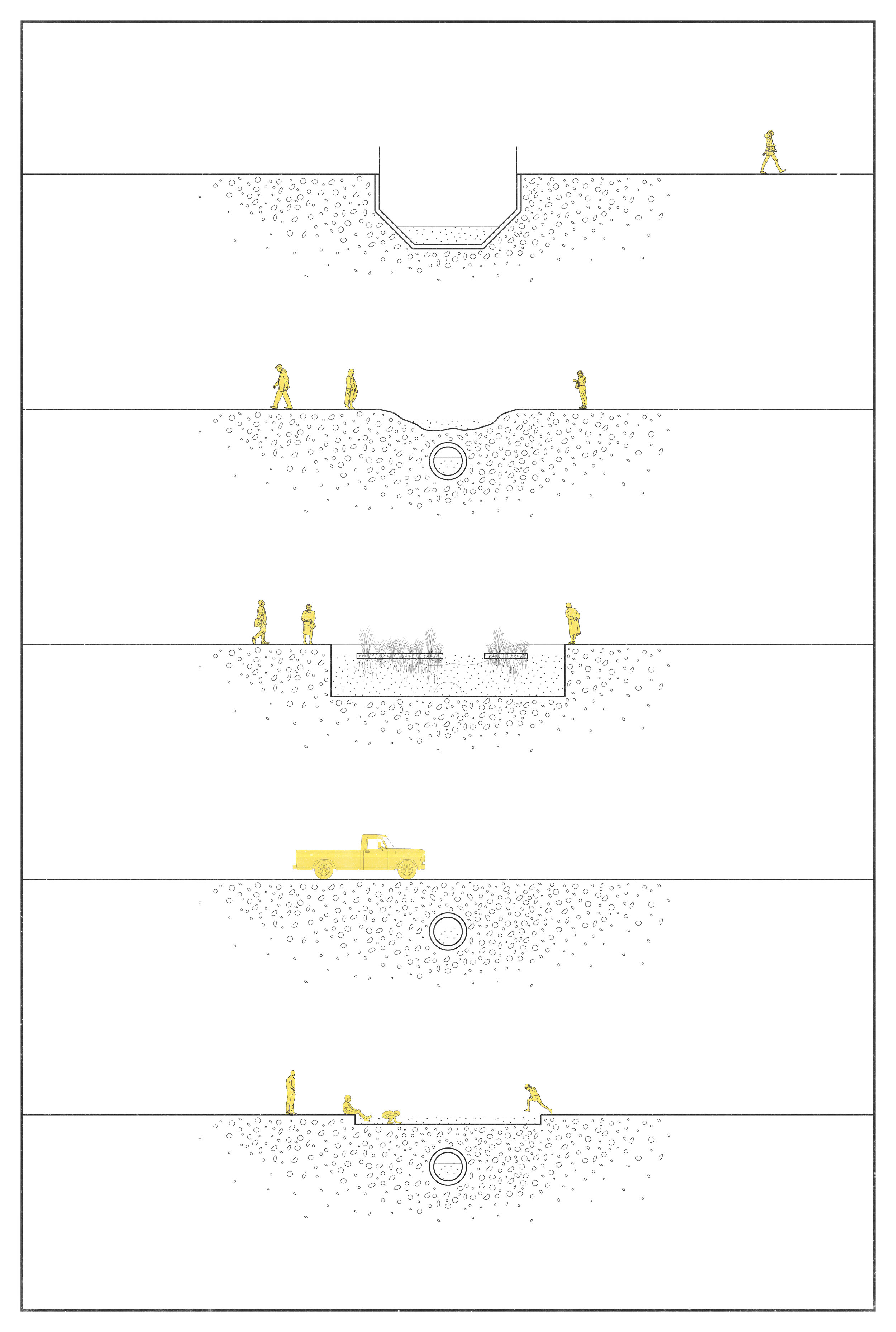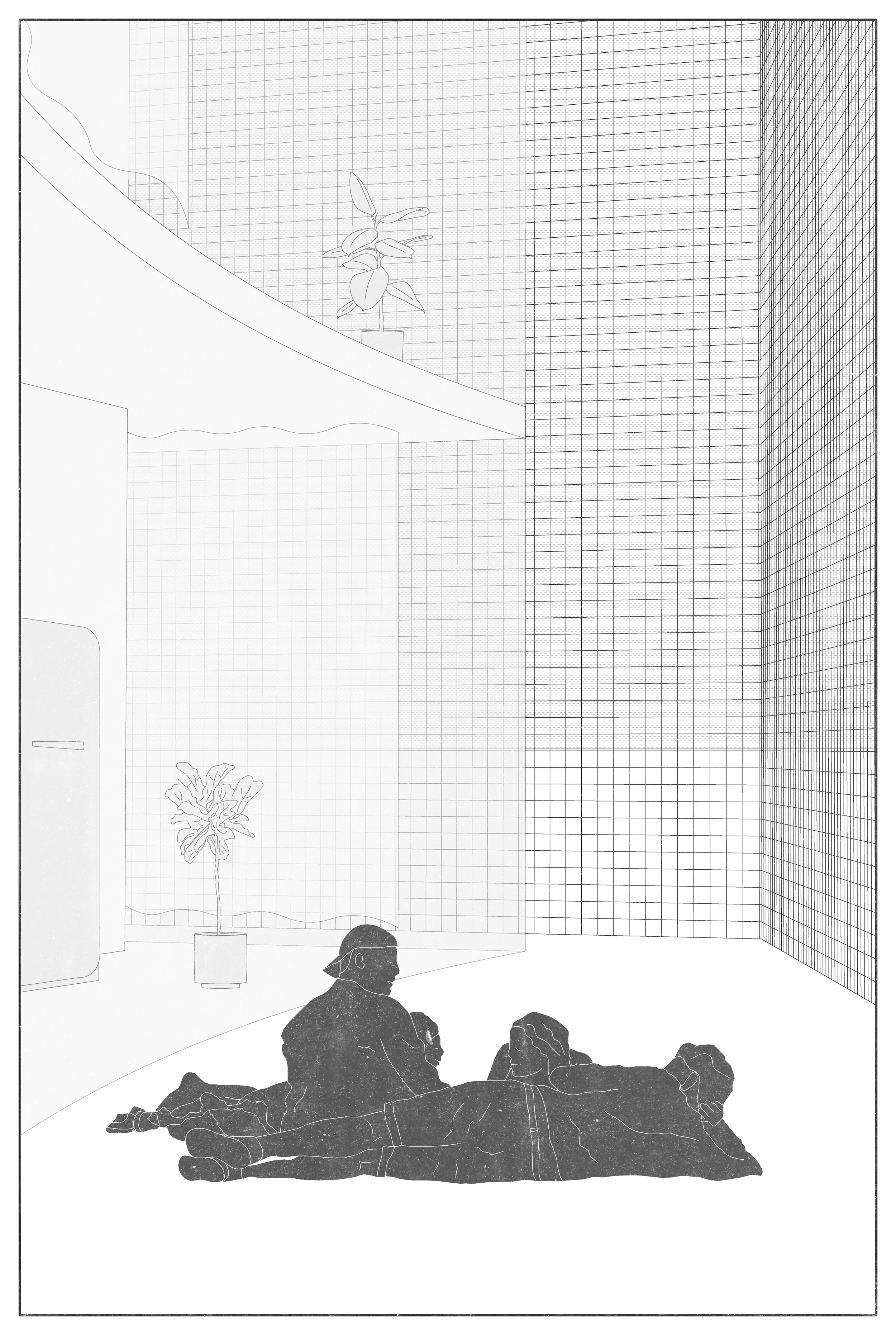Amplify + Filter
Urban Housing + Constructed Wetlands Along International Boulevard in Oakland, CA
Prof. Rene Davids / UC Berkeley, Fall 2019
Plywood + cast soap massing model — 1/16” = 1’ 0”
Section model — 1/8” = 1’ 0”
Left: Income by block / Right: Sewage leaks + Arroyo Viejo watershed



Every year, thousands of gallons of sewage overflow into Oakland’s creeks and ultimately the San Francisco Bay. The points at which International Boulevard and the creeks intersect create opportunities to filter the contamination before it affects the bay.
The boulevard also intersects with many side streets, on which the Arroyo Viejo community situates itself in single-family homes behind fences. What escapes these fences, however, is the unique cultural sounds of private outdoor spaces. Typically considered noise to be muffled, these sounds are to be celebrated and infused into International Boulevard.
This project acts not only as a water treatment mechanism, but also as an amplification device. At each intersection between a creek and the boulevard, housing clusters will form around a constructed wetland, creating nodes of commotion.
A light, constant canopy floats above a ground plane of local economic stimulation, through programs such as a market, church, library and day care. The roof-scape also provides opportunity for community gathering and accessibility. Roof amphitheaters face the boulevard, allowing residents and visitors to hold community events or participate in traditional festivals celebrated along the boulevard, such as Cinco de Mayo and Dia de los Muertos.
Between the ground- and roof-scape is a core of public housing. Individual units are scattered with shared spaces between them. The inner core is enveloped by an outer shell, containing a terrace facing the boulevard, designed to amplify the sounds of the resident interactions. This porous shell, like the side street fences, allows sound to escape while providing privacy and interior light effects.
Co-housing allows for flexibility and more interaction among residents, in contrast with conventional housing where residents may not know their own neighbor.
This project is an active participant in its context, supplying environmental infrastructure and transforming misconceived noise into a stimulating public soundscape.